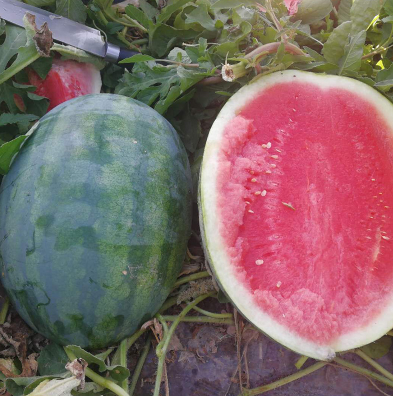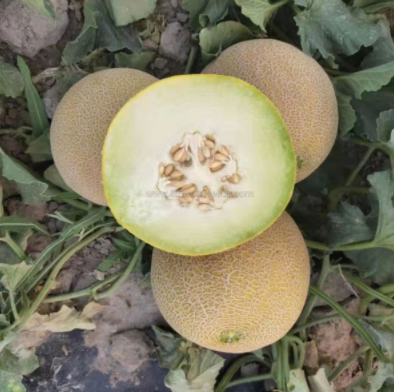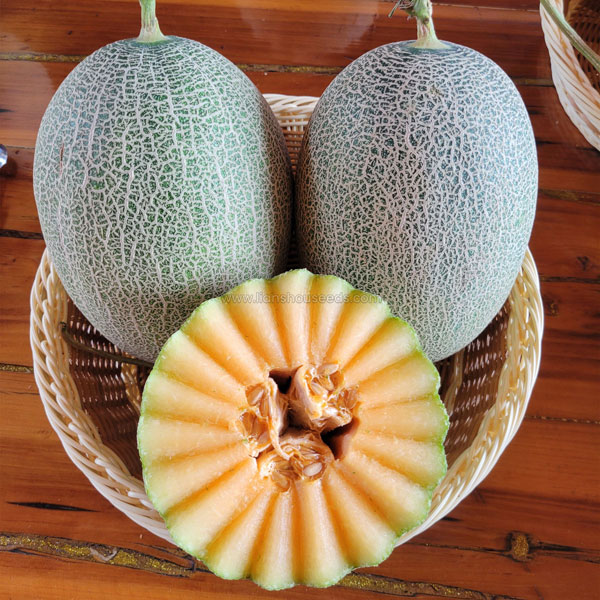20+ Different Types of Melons
Melons are a quintessential summer delight, offering a refreshing burst of sweetness and hydration. With an array of colors, flavors, and textures, melons come in numerous varieties that cater to diverse palates. In this guide, we'll explore over 20 different types of melons, each with its unique characteristics and appeal.
1.Watermelon (Citrullus lanatus):The iconic watermelon is known for its juicy, crisp flesh and high water content. It comes in various sizes and shades of green and red, making it a staple at summer gatherings. Source: lianshouseeds.com
2. Cantaloupe (Cucumis melo var. cantalupensis):Cantaloupe, often referred to as muskmelon, boasts orange, fragrant flesh with a sweet aroma. Its netted rind distinguishes it from other melon types. Source: thespruceeats.com
3. Honeydew (Cucumis melo var. inodorus):Honeydew melon features pale green flesh and a subtly sweet taste. Its smooth skin and light aroma contribute to its appeal. Source: healthline.com
4. Galia Melon (Cucumis melo var. reticulatus):Galia melon is a hybrid variety with sweet, aromatic, and juicy flesh. Its netted skin transitions from green to golden when ripe. Source: thekitchn.com
5. Canary Melon (Cucumis melo var. inodorus):Canary melon showcases vibrant yellow skin and pale green flesh. Its flavor profile is mild and subtly sweet. Source: specialtyproduce.com
6. Persian Melon (Cucumis melo var. reticulatus):Persian melon, also known as Casaba melon, boasts pale green to yellow skin and tender, sweet flesh with a hint of spice. Source: gardeningchannel.com
7. Crenshaw Melon (Cucumis melo var. inodorus):Crenshaw melon features a wrinkled rind and salmon-colored flesh with a sweet and slightly spicy flavor. Source: thespruceeats.com
8. Sprite Melon (Cucumis melo):Sprite melon is a smaller variety with ivory skin and pale green stripes. Its sweet, aromatic flesh is perfect for snacking. Source: bonnieplants.com
9. Ogen Melon (Cucumis melo var. reticulatus):Ogen melon offers pale green flesh that's exceptionally juicy and sweet, making it a popular choice for desserts. Source: specialtyproduce.com
10. Piel de Sapo Melon (Cucumis melo var. inodorus):Piel de Sapo, or Santa Claus melon, has mottled green skin and sweet, crisp white or pale green flesh. Source: thekitchn.com
11. Charentais Melon (Cucumis melo var. cantalupensis):Charentais melon hails from France and features orange flesh with rich flavor and floral aroma. Source: thespruceeats.com
12. Juan Canary Melon (Cucumis melo var. inodorus):Juan Canary melon has a vibrant yellow rind and pale green flesh. Its taste is mildly sweet and aromatic. Source: specialtyproduce.com
13. Sharlyn Melon (Cucumis melo var. reticulatus):Sharlyn melon boasts salmon-colored flesh with a unique blend of flavors ranging from sweet to tangy. Source: thekitchn.com
14. Cavaillon Melon (Cucumis melo var. cantalupensis):Cavaillon melon, also called French Charentais, is small and fragrant with deep orange flesh. Source: specialtyproduce.com
15. Ananas Melon (Cucumis melo var. reticulatus):Ananas melon, also known as pineapple melon, offers pale green to yellow skin and sweet, juicy flesh reminiscent of pineapple. Source: thekitchn.com
16. Hami Melon (Cucumis melo var. reticulatus):Hami melon, originating from China, has orange flesh and a refreshingly sweet taste. Source: specialtyproduce.com
17. Gallicum Melon (Cucumis melo var. cantalupensis):Gallicum melon features orange flesh with a delicate aroma and flavor profile. Source: thekitchn.com
18. Cavaillon Melon (Cucumis melo var. cantalupensis):Cavaillon melon, also called French Charentais, is small and fragrant with deep orange flesh. Source: specialtyproduce.com
19. Canary Melon (Cucumis melo var. inodorus):Canary melon showcases vibrant yellow skin and pale green flesh. Its flavor profile is mild and subtly sweet. Source: thekitchn.com
20. Charantais Melon (Cucumis melo var. cantalupensis):Charantais melon hails from France and features orange flesh with rich flavor and floral aroma. Source: specialtyproduce.com
Considerations When Buying Melon Seeds:
Climate and Growing Conditions:Choose melon varieties that are well-suited to your climate and growing conditions. Some melons thrive in hot and sunny environments, while others prefer cooler temperatures.
Garden Space:Consider the space available in your garden. Some melon vines can be sprawling, so ensure you have enough room for their growth.
Germination and Growth Time:Be aware of the germination and growth time of the melon varieties you choose. Some melons mature quicker than others, allowing you to enjoy the fruits sooner.
Taste and Texture:Melon flavors and textures vary widely. Research the taste and texture of different melon varieties to find ones that match your preferences.
Disease Resistance:Look for melon varieties that have natural resistance to common pests and diseases in your area. This can reduce the need for chemical interventions.
Harvesting Indicators:Learn about the indicators of ripeness for each melon type. Proper timing for harvest ensures the best flavor and quality.
Companion Plants:Consider companion planting to enhance the health and productivity of your melon plants. Some plants can help deter pests or improve soil quality.
Seed Quality and Source:Purchase high-quality melon seeds from reputable sources. Fresh, viable seeds are essential for successful germination and growth.
Garden Care:Ensure your garden soil is well-prepared with adequate nutrients and drainage. Provide consistent watering and appropriate care to promote healthy melon growth.
Personal Preferences:Ultimately, choose melon varieties that align with your taste preferences and gardening goals. Whether you enjoy sweet, aromatic melons or unique and exotic types, there's a melon variety for everyone.
When selecting melon seeds, a comprehensive evaluation that considers your climate, available space, taste preferences, and growing conditions will lead to a successful and satisfying melon-growing experience.
274
0
0
All Comments (0)
Previous: 5 Best Selling NPK Fertilizer 2023
Next: Top 20 Best Selling Vegetable Seeds: A Guide to Gardening Success
If you are interested in sending in a Guest Blogger Submission,welcome to write for us!








Comments